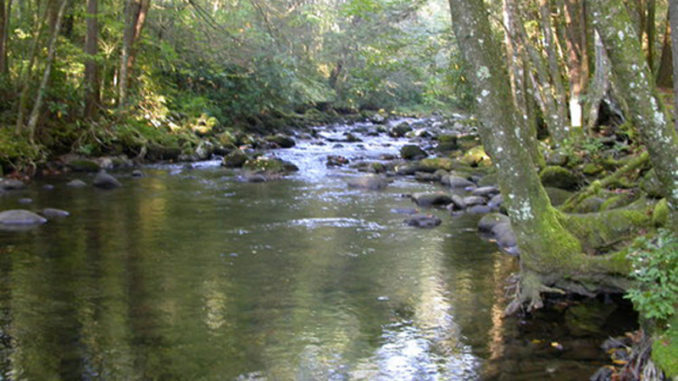
Santeetlah Creek has been wonderful mistress
I’ve had numerous romances, affairs, dalliances, one-time stands and flirtations over years — too many to care about counting. Only one do I return to time after time, the one that I never tire of, the one that always makes my heart and soul sing, my one true love: Santeetlah Creek in Graham County.
Since my early 20s, I’ve explored and fished it from end to end, from its headwaters far up in the Nantahala National Forest to its end where it flows into Santeetlah Lake, and I’ve camped on its banks from end to end.
It is not a designated wild-trout stream, but it has all the characteristics of one. Only forests line its banks — no houses, no developments, just two small campgrounds on the lower end. A rough, narrow, unpaved road provides access to the creek in the upper sections. Santeetlah is a borderline, medium-sized stream in most places, small in its upper reaches, with rushing waters, numerous splash-pools and small waterfalls. I sometimes don’t catch a limit, but I’ve never failed to catch trout.
Although Santeetlah is stocked regularly in season, I have caught many wild trout in the hard-to-reach sections, including an occasional errant wild brook trout. My most memorable and largest trout were caught in Santeetlah: a 20-inch rainbow and a beautifully colored 18-inch brown trout. I actually hooked the big brown twice, losing it on the first try just as I worked it to the bank. The next day, I returned and hooked it again, this time landing it. I released both; they were too big for my frying pan.
I’ve fished most of the trout streams in the western end of the state, and I have had fond encounters with many of them — Snowbird Creek in Graham County, Hazel Creek and Eagle Creek in the Great Smoky Mountains National Park, the South Toe River in Yancey County — but none provide the satisfaction and intimacy that Santeetlah invariable gives me.
My first trip to Santeetlah was an opening-day outing with a small group that included colleagues from the newspaper where I worked and several others. We made the trip many times thereafter. We would stay in a 100-year-old cabin that was owned by the U.S. Forest Service, a one-room log cabin with a large loft where we slept, sharing it with a sizable population of field mice that scurried a bit unsettlingly over the floor at night.
On that initial outing, I had very little fishing experience and owned only a closed-faced Zebco rod and reel, the only tackle I could afford at the time. The others, except one man, fished with spinning gear and spinners. We would go up on Friday before opening day and indulge in the pleasures that most male fishers enjoy — nickel-and-dime poker and good whiskey — retiring only when we were too tired or too bleary-eyed to read our cards.
We would rise at daybreak, drink black coffee and nurse our hangovers, then head for the stream, except for one man, the late T.N. Massie of Sylva, who never got up early to fish. He stayed in bed. “I’ll go out when the fish get up,” he said.
We would fish hard, sometimes in weather so cold the eyes of our fishing rods iced up, and catch only a few trout, never a limit.
When we returned around noon for lunch, Massie would put on his waders, get his fly-rod and fly box and finally go fishing. Within an hour or so, he would have a limit of five trout, all caught on flies. The rest of us fished until late evening, finally catching enough trout for a fine feast of fried trout accompanied by country-fried potatoes mixed with several handfuls of fresh ramps. We stank for days.
That first trip to Santeetlah was also my introduction to fly fishing. Massie’s ability to catch fish on an artificial fly fascinated me, so on the second day, I left my fishing gear at the cabin and tagged along with him when he got ready to fish. I watched in awe as he caught trout after trout, flicking a fly under low-hanging rhododendron bushes, dabbling a fly in a splash pool or floating a fly in pocket water without ever letting the fly flag. He was not flashy, just deliberate and accurate. He would make one cast for distance and use gentle roll casts to keep the fly in the water until he was ready to move to another spot. Not once did he get hung up or lose a fly. He would catch a trout in just about every place he cast, releasing all of them.
As soon as I saved enough money, I bought my first fly rod and reel and taught myself to fly-fish on Santeetlah Creek. I caught only a few trout at first, falling back on worms or spinners until I gained the necessary confidence and proficiency to catch enough trout for my dinner. After a long while, I found that I could catch more trout with a fly than I could with either worms or spinners.
When my children were young, we spent many summer weekends camping and fishing at Santeetlah. I also have taken my grandchildren there. Although my children are grown and scattered, it is still a place that has a fond spot in their memories.
Recently, I fished the Horsepasture River in Transylvania County, a bold, beautiful trout stream renowned for its big trout. It was an awkward, unsatisfying encounter. I didn’t know the stream well enough, nor did I have the desire to become more acquainted. Beauty and reputation are not always factors for a satisfying relationship.
At least twice a year, sometimes more, and sometimes with my children and grandchildren, I make the trip to Santeetlah, camp in the wild, and fish to my heart’s content.
Santeetlah is and always will be my one true love.

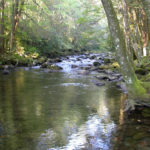
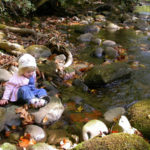
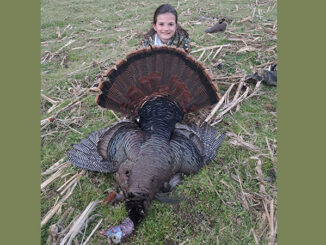
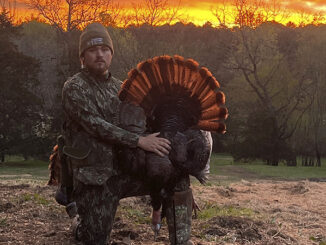
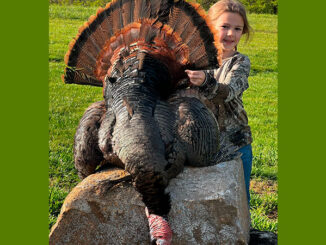

Be the first to comment